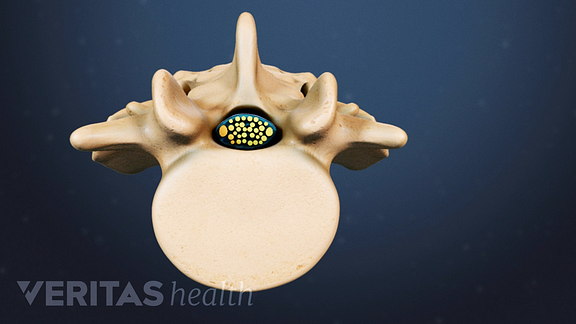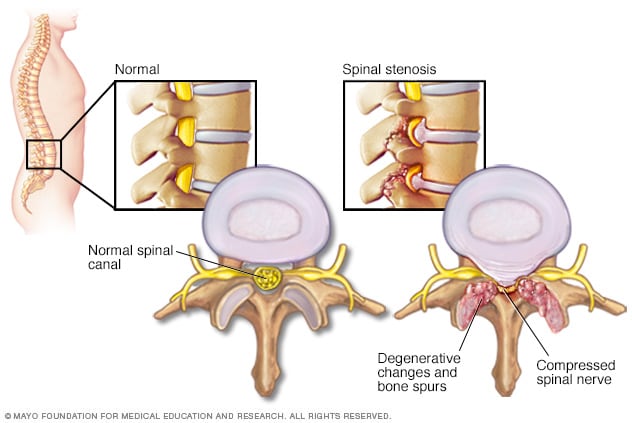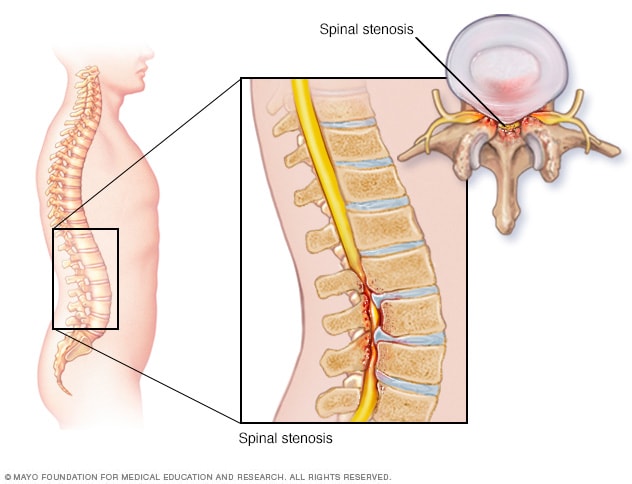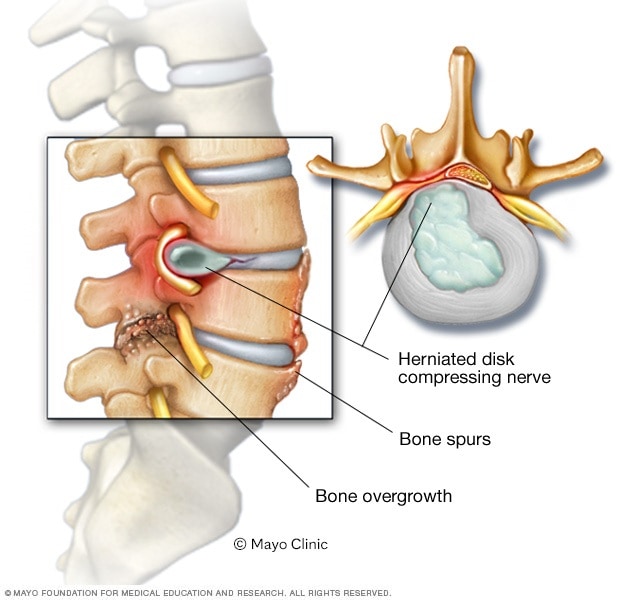Voice of All Awakened Aboriginal Societies (VoAAAS)
https://www.spine-health.com/conditions/spinal-stenosis/lumbar-spinal-stenosis-treatment
Lumbar Spinal Stenosis Treatment
33.TogetherwiththeThreeRefugeswhatmoralprinciplesshouldaBuddhistfolows?
Q 33 Together with the Three Refugees what moral principles should a Buddhist follow ?
https://www.unhcr.org/50be10cb9.pdf
THE BUDDHIST CORE VALUES
AND PERSPECTIVES FOR PROTECTION CHALLENGES:
FAITH AND PROTECTION
I. THE BACKGROUND OF BUDDHISM
Buddhism,
like most of the great religions of the world, is divided
into a number of different traditions. However, most traditions
share a common set of fundamental beliefs.
One
central belief of Buddhism is often referred to as
reincarnation — the concept that people are reborn after dying.
In fact, most individuals go through many cycles of birth,
living, death and rebirth. A practicing Buddhist differentiates
between the concepts of rebirth and reincarnation.
In
reincarnation, the individual may recur repeatedly. In rebirth, a
person does not necessarily return to Earth as the same entity
ever again. He compares it to a leaf growing on a tree. When
the withering leaf falls off, a new leaf will eventually replace it.
It is similar to the old leaf, but it is not identical to the original
leaf.
Buddhism
is a philosophy of life expounded by Gautama Buddha (”Buddha”
means “awakened one with awareness”), who lived and taught in
northern India in the 6th century B.C. The Buddha was not a god and the
philosophy of Buddhism does not entail any theistic world view. The
teachings of the Buddha are aimed solely at liberating sentient beings
from suffering.
The Basic Teachings of Buddha which are core to Buddhism are:
•
The Three Universal Truths;
•
The Four Noble Truths; and
•
The Noble Eightfold Path.
II. THE THREE UNIVERSAL TRUTHS
1. Nothing is lost in the universe
2. Everything Changes
3. The Law of Cause and Effect
In
Buddhism, the law of kamma, says “for every event that
occurs, there will follow another event whose existence was
caused by the first, and this second event will be pleasant
or unpleasant according as its cause was skillful or
unskillful.”
Therefore, the law of Karma teaches that the responsibility for
unskillful actions is borne by the person who commits them.
After
his awakenment with awareness, the Buddha went to the Deer Park near
the holy city of Benares and shared his new understanding with five holy
men. They understood immediately and became his disciples.
This
marked the beginning of the Buddhist community. For the next
forty-five years, the Buddha and his disciples went from place
to place in India spreading the Dhamma, his teachings. Their
compassion knew no bounds; they helped everyone along the way,
beggars, kings and slave girls.
At night, they would sleep where they were; when hungry they would ask for a little food.
Wherever
the Buddha went, he won the hearts of the people because he
dealt with their true feelings. He advised them not to accept
his words on blind faith, but to decide for themselves whether
his teachings are right or wrong, then follow them.
He
encouraged everyone to have compassion for each other and develop
their own virtue: “You should do your own work, for I can teach only the
way.”
Once,
the Buddha and his disciple Ananda visited a monastery where a monk was
suffering from a contagious disease. The poor man lay in a mess with no
one looking after him. The Buddha himself washed the sick monk and
placed him on a new bed. Afterwards, he admonished the other monks:
“Monks, you have neither mother nor father to look after you. If you do not look after each other, who will look after you?
Whoever serves the sick and suffering, serves me.”
After
many such cycles, if a person releases their attachment to desire and
the self, they can attain Nibbana. This is a state of liberation and
freedom from suffering.
The three trainings or practices
These three consist of:
1.
Sila:
Virtue, good conduct, morality. This is based on two
fundamental principles: The principle of equality: that all
living entities are equal. The principle of reciprocity: This is
the ” Golden Rule” in Christianity - to do unto others as you
would
wish them to do unto you. It is found in all major religions.
2.
Samadhi:
Concentration, meditation, mental development. Developing one’s
mind is the path to wisdom which, in turn, leads to personal
freedom. Mental development also strengthens and controls our mind;
this helps us maintain good conduct.
3.
Prajna:
Discernment, insight, wisdom, enlightenment. This is the real
heart of Buddhism. Wisdom will emerge if your mind is pure and calm.
The
first two paths listed in the Eightfold Path, described below, refer to
discernment; the last three belong to concentration; the middle three
are related to virtue.
III. THE FOUR NOBLE TRUTHS
The Buddha’s Four Noble Truths explore human suffering. They may be described (somewhat simplistically) as:
1.
Dukkha:
Suffering exists:
Life is suffering. Suffering is real and almost universal. Suffering has many causes: loss, sickness, pain, failure, and
the impermanence of pleasure.
2.
Samudaya
:
There
is a cause of suffering. Suffering is due to attachment. It is the
desire to have and control things. It can take many forms: craving of
sensual pleasures; the desire for fame; the desire to avoid unpleasant
sensations, like fear, anger or jealousy.
3.
Nirodha:
There is an end to suffering
.
Attachment
can be overcome. Suffering ceases with the final liberation of
Nirvana (Nibbana). The mind experiences complete freedom,
liberation and non-attachment. It lets go of any desire or craving.
4.
Magga:
In order to end suffering, you must follow the Eightfold Path
.
There is a path for accomplishing this.
The five precepts
These
are rules to live by. They are somewhat analogous
to the second half of the Ten Commandments in Judaism and
Christianity — that part of the Decalogue which describes behaviors to
avoid. However, they are recommendations, not commandments.
Believers are expected to use their own intelligence in deciding
exactly how to apply these rules:
1. Do not kill. This is sometimes translated as “not harming” or an absence of violence.
I do not want others to kill or harm me. So I will train my mind not to kill or harm others.
2. Do not steal. This is generally interpreted as including the avoidance of fraud and economic exploitation.
I
do not like others to steal my things or do fraud and economically
exploit me, So I will train my mind not to steal other’s things or do
fraud and economically exploit me.
3. Do not lie. This is sometimes interpreted as including name-calling, gossip, etc.
I
do not like others to tell lies to me including name-calling, gossip
etc. So I will train my mind not to tell lies to others including
name-calling, gossip, etc.
4.
Do not misuse sex. For monks and nuns, this means any departure from
complete celibacy. For the laity, adultery is forbidden, along
with any sexual harassment or exploitation, including that within
marriage. The Buddha did not discuss consensual premarital sex within a
committed relationship, thus, Buddhist traditions differ on this. Most
Buddhists, probably influenced by their local cultures, condemn same-sex
sexual activity regardless of the nature
of the relationship between the people involved.
I
do not like others to take my wife/husband. So I will train my mind not
to misuse sex, adultery, any sexual harassment or exploitation.
5.
Do not consume alcohol or other drugs. The main concern here is that
intoxicants cloud the mind. Some have included as a drug other
methods of divorcing ourselves from reality —
e.g. movies, television, and the Internet.
I will train my mind not to consume alcohol or other drugs as intoxicants cloud the mind and may violate all the above precepts.
Those preparing for monastic life or who are not within a family are expected to avoid an additional five activities:
6. Taking untimely meals.
7. Dancing, singing, music, watching grotesque mime.
8. Use of garlands, perfumes and personal adornment.
9. Use of high seats.
10. Accepting gold or silver.
There
is also a series of eight precepts which are composed of the first
seven listed above, followed by the eighth and ninth combined as
one. “Ordained Theravada monks promise to follow 227 precepts!”
IV.
THE EIGHTFOLD PATH
The Buddha’s Eightfold Path consists of:
Panna
: Discernment, wisdom:
1. Samma ditthi: Right Understanding of the Four Noble
Truths. Right View is the true understanding of the four noble
truths.
2. Samma sankappa: Right thinking; following the right
path in life. Right Aspiration is the true desire to free oneself
from attachment, ignorance, and hatefulness.
These two are referred to as Prajna, or Wisdom.
Sila:
Virtue, morality:
3. Samma vaca: Right speech: No lying, criticism, condemning,
gossip, harsh language. Right Speech involves abstaining from lying,
gossiping, or hurtful talk.
4. Samma kammanta Right conduct or Right Action
involves abstaining from hurtful behaviors, such as killing,
stealing, and careless sex. These are called the Five Precepts.
5. Samma ajiva: Right livelihood: Support yourself without
harming others. Right Livelihood means making your living in such a
way as to avoid dishonesty and hurting others, including animals.
These three are referred to as Sila, or Morality.
Samadhi:
Concentration, meditation:
6.
Samma vayama: Right Effort: Promote good thoughts; conquer evil
thoughts. Right Effort is a matter of exerting oneself in regards to the
content of one’s mind: Bad qualities should be abandoned and prevented
from arising again. Good qualities should be enacted and nurtured.
7. Samma sati: Right Mindfulness: Become aware of your
body, mind and feelings. Right Mindfulness is the focusing of
one’s attention on one’s body, feelings, thoughts, and
consciousness in such a way as to overcome craving, hatred, and
ignorance.
8. Samma samadhi: Right Concentration: Meditate to achieve a
higher state of consciousness. Right Concentration is meditating in
such a way as to progressively realize a true understanding of
imperfection, impermanence, and non-separateness.
There
are, however, many sects of Buddhism and there are different
kinds of Buddhist monks all over the world. The life and
customs of Buddhist monks are not only different and unique
but consist of a spiritual meaning. Their daily life follows a
strict schedule that revolves around meditation, study of
scriptures, and taking part in ceremonies. There are Buddhist shrines,
Buddhist monasteries, where monks live, Gompas and Buddhist Stupas all
over the world.
Though
it originated in northern India, the Emperor Ashoka helped to spread
Buddhism into South East Asian countries such as Sri Lanka, Myanmar,
Thailand and Indo-China, from where it movedon to influence people
in the Himalayan kingdoms of Sikkim, Bhutan, Nepal, Tibet,
Mongolia, Central Asia as well as China, Korea, Viet Nam and Japan.
Around 95 per cent of the population in Thailand is Buddhist, the
highest concentration in the world, with Cambodia, Myanmar,
Bhutan, Sri Lanka, Tibet, Lao People’s Democratic Republic, Viet Nam,
Japan, Macao (China) and Taiwan Province of China following close
behind.
Devotees reaffirm their faith in the five principles called Panchsheel:
1. Do not to take life;
2. Do not to steal;
3. Do not to commit adultery;
4. Do not lie;
5. Do not to consume liquor or other intoxicants
34.WriteabriefessayonthemeaningofBuddhaVandanā,asyouunderstandit.
Q 34 Write a brief esssay on the meaning of Buddha Vandana, as you understand it ?
https://archive.org/stream/buddhavandana00piyaarch/buddhavandana00piyaarch.txt
Homage to the Blessed One,
The Perfected One, The Fully Awakened One
I go to the Buddha for refuge.
I go to the Dhamma for refuge.
I go to the Sangha for refuge.
A second time, I go to the Buddha for refuge.
A second time, I go to the Dhamma for refuge.
A second time, I go to the Sangha for refuge.
A third time, I go to the Buddha for refuge.
A third time, I go to the Dhamma for refuge.
A third time, I go to the Sangha for refuge.
I undertake the precept to abstain from killing.
I undertake the precept to abstain from stealing.
I undertake the precept to abstain from sexual
I undertake the precept to abstain from lying.
I undertake the precept to abstain from intoxicants.
Offering of Water
O, Venerable, kindly accept this
water, specially dedicated.
Please take it, great one, with your
great compassion.
Offering of Food
O, Venerable, kindly accept this food,
specially dedicated.
Please take it, great one,
with your great compassion.
Offering of Medicine
O, Venerable, kindly accept this
offering of medicine.
Please take it, great one, with your
great compassion.
Homage to Stupas
I forever venerate stupas in all the
lands, wherever they may be:
the relics, the Bodhi tree, and
Buddha statues.
Homage to the Bodhi Tree
I venerate the Bodhi tree,
seated at the base of which,
victorious over all obstacles,
the Great One realized Omniscience.
35.Istheword‘Buddha’apersonalnameortitle,ordoesitstandsforanofice?
Q 35 Is the word “Buddha ” a personal name or title, or does it stands for an office ?
Buddha is the knowledge of Truth. Anyone who has realized the Truth is
the Buddha. Some say Buddha is a title … just as King is the title. But
they forget that King can be stupid i.e position of title King can be
occupied by an undeserving candidate. But any person who occupies the
title of Buddha must be the one who has realized the Truth.
All Buddhas of the past, present and future tell the same eternal truths
again and again… they feel the same compassion and equanimity for all
the beings.
Dona asked this question to the Buddha in the Dona Sutta:
“When asked, ‘Are you a deva?’ you answer, ‘No, brahman, I am not a
deva.’ When asked, ‘Are you a gandhabba?’ you answer, ‘No, brahman, I
am not a gandhabba.’ When asked, ‘Are you a yakkha?’ you answer, ‘No,
brahman, I am not a yakkha.’ When asked, ‘Are you a human being?’ you
answer, ‘No, brahman, I am not a human being.’ Then what sort of being
are you?”
“Brahman, the fermentations by which — if they were not abandoned — I
would be a deva: Those are abandoned by me, their root destroyed, made
like a palmyra stump, deprived of the conditions of development, not
destined for future arising. The fermentations by which — if they were
not abandoned — I would be a gandhabba… a yakkha… a human being:
Those are abandoned by me, their root destroyed, made like a palmyra
stump, deprived of the conditions of development, not destined for
future arising.
“Just like a red, blue, or white lotus — born in the water, grown in
the water, rising up above the water — stands unsmeared by the water,
in the same way I — born in the world, grown in the world, having
overcome the world — live unsmeared by the world. Remember me,
brahman, as ‘awakened.’
The Buddha is the one who is awake with awareness, whereas the other unawakened people are “asleep”.
The Buddha is not an ancestor to the future Buddhas. He is able to
see into future or past through some degree of omniscience, but he is
not recalling them.
36.Explainclearlythemeaningoftheword‘Buddha’asyouunderstandit.
Q 36 Explain clearly the meaning of the word “Buddha” as you understand it.

The term Buddha means “Awakened One with Awareness”. As he fully comprehended the Four Noble Truths
and as he arose from the slumbers of ignorance he is called a Buddha.
Since he not only comprehends but also expounds the doctrine and awakens
others, He is called a Samma-Sambuddha — a Fully Awakened
One.
“Monks,
there is one person whose birth into this world is for the welfare and
happiness of many, out of compassion for the world, for the gain and
welfare and happiness of gods and humanity. Who is this one person? It
is the Tathāgata, who is a Worthy One, a Fully Enlightened One ~ Anguttara Nikaya”
“Hard is it
to be born a man; hard is the life of mortals. Hard is it to gain the
opportunity of hearing the Sublime Truth, and hard to encounter is the
arising of the Buddhas.~ Dhammapada 182”
“Driven by fear, men go for refuge to many
places — to hills, woods, groves, trees and shrines. Such, indeed, is
no safe refuge; such is not the refuge supreme. Not by resorting to such
a refuge is one released from all suffering. He who has gone for refuge
to the Buddha, the Teaching and his Order, penetrates with
transcendental wisdom the Four Noble Truths — suffering, the cause of
suffering, the cessation of suffering, and the Noble Eightfold Path
leading to the cessation of suffering. This, indeed, is refuge secure.
By seeking such refuge one is released from all sorrow. ~ Dhammapada
188-192”
37.WhyishecaledBuddha?Whatarethepre-requisitesforbecomingaBuddha?
Q 37 Why is he called Buddha ? What are the prerequisites for becoming a Buddha ?
38.Whatisthemeaningoftheterm Bodhisata?HowmanydiferenttypesofBodhisata
arethere?Enumerate.
Q 38 What is the meaning of the term Bodhisatta ? How many different types of Bodhisatta are there ? Enumerate.
According to the traditional belief a Bodhisatta,
before reaching his last birth as a Buddha on this earth, is living in the
Tusita-heaven (s. deva), the heaven of bliss. Cf. A. IV, 127; VIII, 70.
In the Pāli Canon and commentaries, the designation
‘Bodhisatta’ is given only to Prince Siddhattha before his awakenment and to
his former existences.
The Buddha himself uses this term when speaking of his
life prior to awakenment (e.g. M.4, M.26).
Bodhisatta-hood is neither
mentioned nor recommended as an ideal higher than or alternative to Arahantship;
nor is there any record in the Pāli scriptures of a disciple declaring it as his
aspiration.
39.WhataretherequirementsforbecomingthediferenttypesofBodhisata?
Q 39 What are the requirements for becoming the different types of Bodhisatta?
40.How manytypesofBuddhaarethere?Whataretheprerequisitesforbecomingthese
diferenttypesofBuddha?
Q 40 How many types of Buddha are there ? What are the prerequisites for becoming these different types of Buddha ?
Traditions regard Sumedha’s life as the beginning of the spiritual journey leading up to the attainment of Buddhahood by Gotama in his last life, a journey which takes place through many lifetimes. Born in a brahmin family, Sumedha begins to live as an ascetic in the mountains. One day he meets Dīpankara Buddha (Sanskrit: Dīpaṃkara)
and offers his own body for him to walk over. During this sacrifice, he
makes a vow that he also will be a Buddha in a future lifetime, which
is confirmed by Dīpankara through a prophecy.
The encounter between Sumedha and Dīpankara Buddha is the oldest Buddhist story known which deals with the path of a bodhisatta, and the story has been described as the Theravādin
interpretation of this ideal. It is the most detailed story of a
previous life of the Buddha, and is one of the most popular stories in Buddhist art.
It is depicted in many Theravādin temples and is at least alluded to in
innumerable Buddhist works. Sumedha’s story has often been raised by
Theravāda Buddhists as an example of selfless service.
Sumedha
|

Sumedha and Dīpankara Buddha, modern illustration
|
| Personal |
| Religion |
Buddhism |
| Home town |
Amaravatī, India |
| Education |
Vedic |
| Known for |
The previous life of Gotama Buddha, when he first declared the wish to become a Buddha |
| Military service |
| Senior posting |
| Teacher |
Dīpankara Buddha |

The accounts of Sumedha and Dīpankara Buddha have been connected to the area northwest of India.
41.WhatisPārami?HowmanyPāramisarethere?Enumerate.
Q 41 What is parami ? How many Paramis are there ? Enumerate .
https://gregupasaka.blogspot.com/2014/02/what-is-parami-how-many-paramis-are.html
What is Parami? How many Paramis are there? How do they determine the attainment of different types of Bodhi?
 Paramis
Paramis
are ‘perfections’ or qualities developed and brought to maturity by Bodhisattas
during their past experiences, and they lead to Buddhahood.
There are ten Paramis in
the Theravada tradition:
Dana Parami – perfection
in giving, generosity
Sila Parami – perfection
in virtue, morality
Nekkhamma Parami –
renunciation of sensual pleasures
Panna Parami – wisdom,
understanding, insight
Viriya Parami – energy,
effort (physical and mental)
Khanti Parami – patience,
endurance, tolerance, non-violence
Sacca Parami –
truthfulness, gentle speech
Adhitthana Parami –
resolution, strong determination, will-power
Metta Parami – universal
love, loving-kindness, goodwill
Upekkha Parami –
equanimity, impartiality
The
ten perfections vary in intensity and magnitude with respect to the three
different types of Bodhi (enlightenment), ranging from least intense (Arahat)
to most intensive (Sammasambodhi). They also vary according to the number of
times they are fulfilled, ranging from once (Arahat), twice (Pacceka) to thrice
(Sammasambodhi).
42HowdothePāramisdeterminetheatainmentofdiferenttypesofBodhi?
Q 42 How do the Paramis determine the attainment of different types of Bodhi ?
4 3 . W rite a n e s s a y o n th e c o re te a c h in g o f a l l B u d
d h a s . W h e n a n d w h e re w a s th is discoursedelivered?
Q 43 Write an essay on on the core teaching of all Buddhas.
- Tibetan Buddhism contains many forms of theology
and teachings on the ideas of life and its cylinder-like motions. Each
form developed from the founder of Buddhism, Siddhartha Gautama, who
lived in the fifth century (Powers, 18). Known as the Buddha, the former
prince created a religious movement that has swept across the world and
stands as a major religion of the world today. Buddhist’s views of
humanity, true reality, and the methods of reaching the end of their
concept of ‘samsara’ range, yet are linked by the fundamental teachings
of a man who wished to enlighten the world…. [tags: Buddhism,
Gautama Buddha, Mahayana]
- Siddhartha Gautama, the Buddha, saw the question of
origin as unimportant and remained silent in addressing it. Instead, the
Buddha sought to describe the world as a cycle, with the repetition
between births and deaths called Samsara. “Because this concept is past,
present and future, everything in the universe is only transient and
has no real individual existence” (Hunter, 2012). Therefore, Samsara is
simply a state of being without a supreme god or creator as the
catalyst. The cycle of Samsara will continue until Nirvana is
attained…. [tags: Buddhism, Gautama Buddha, Dukkha]
- Through the teachings of the Buddha, Buddhist adherents
are given the direction to which points to the ideal way of living.
These teachings allow adherents to build Karma and work their way to
enlightenment by eliminating desire. As adherents follow core Buddhist
beliefs such as the Noble Eightfold path, and the 5 Precepts, they walk
the “middle way”, as well as quench desire, and achieve the ultimate
goal of Nirvana. These teachings come in the form of sacred writings, of
the Tripitaka or the Pali Canon, and make a significant impact on
individuals and the community…. [tags: Buddhism, Gautama Buddha,
Dukkha]
- The teachings of the historic Buddha form the basis of
the Buddhist world view and practice. Buddha also know has Siddartha
Gautama was born in 624 BC, as a royal prince in a town called Lumbini,
located in northern India, but is now part of Nepal. His parents named
him Siddartha because there were remarkable predictions about his
future. At the age of twenty-nine Siddartha Gautama abandoned the
indulgence of his royal life. He wandered off into the world in search
of understanding life. When he came across an old man, a sick man, a
deceased man, and a Monk…. [tags: Gautama Buddha, Noble Eightfold
Path, Buddhism]
- Buddhism is a religion, philosophy and a way of
life including a variety of traditions, beliefs and practices, primarily
based on teachings and scriptures attributed to Siddhartha Gautama,
more commonly known as the Buddha or the enlightened one. The Buddha
resided and taught his disciples in east of the Indian subcontinent in a
time between the 6th and 4th centuries BCE. He is well recognized and
praised by Buddhists as an enlightened and awakened teacher who share
his insights and beliefs to help them end ignorance of dependent
origination, thus escaping from what is interpreted as a cycle of
suffering and rebirth…. [tags: Buddhism, Gautama Buddha, Mahayana]
- The Saddhamma Sutta answers a question about the
need for additional rules of behavior within the sangha as the sangha
developed. Even during the Buddha’s time there was adaptations.
accommodations, and embellishments made to the Dhamma that led to
unskillful behavior. The intense desire to alter the dhamma to fit
confused views rooted in ignorance of The Four Noble Truths has
persisted until today. This has resulted in many contradictory
“Buddhist” religions that together present a confusing “dharma.” What
has developed is at best ineffective in developing the stated purpose of
the Buddha’s teaching: “I teach the origination of dukkha and the
cessation of dukkha, nothing more.” (Majjhima Ni… [tags: Four Noble
Truths, Gautama Buddha]
- ‘One is one’s own refuge, who else could be the
refuge?’ said Buddha. This section in the article of Buddhist Attitude
of Mind explains Buddhas stand point about what does taking refuge
really mean, and where and in whom people have to find their shelter.
Based on this section, Buddha admonished his disciples to ‘be and find
refuge only in themselves’, and never to seek refuge in or help from
anybody else. He encouraged and stimulated each person to develop
himself and work out his own emancipation…. [tags: Buddhism, Gautama
Buddha, Mother, Sangha]
- When a person is asked what morals and ethics
are to them, they would most likely reply by stating that ethics are
ideas on how a person should act and morals are an idea on what is right
and what is wrong. However, a person does not just know what morals and
ethics are, let alone know how to live moral and ethical lives; people
usually tend to be taught these ideas. People taught morals and ethics
to others, no matter what time period they were in. It doesn’t matter if
that person was Hammurabi during the 18th century BC Mesopotamia, the
Buddha in late 400’s BC, or even Confucius in 500’s BC China….
[tags: Gautama Buddha, Noble Eightfold Path]
- Nirvana: What Is It, and Why It Is Not the
Supreme Desirable Goal in Human Life A wanderer once asked Sariputta, a
chief disciple of the notorious Buddha, “What now is Nibbana (Pali
form)?” Sariputta answered this wanderer by saying, “The destruction of
lust, the destruction of hatred, the destruction of delusion: this
friend, is called Nibbana” (Bodhi 364). Nirvana also defines the Third
Noble Truth, the “cessation of dukkha (suffering)” (Rahula 57). How can
one achieve Nirvana. According to Bhikkhu Bodhi, author of the book In
the Buddha’s Words, one must follow the renowned path called the Noble
Eightfold Path…. [tags: Noble Eightfold Path, Gautama Buddha,
Buddhism]
44.HowcantheMiddlePathbeexplainedintermsofethics,psychologyandphilosophy?
Q 44 How can the Middle path be explained in terms of ethics, psychology and philisophy ?
45.DescribewhentheBuddhaRatana,DhammaRatanaandSanghaRatanaarose.What
isthesignificanceoftheterm
Ratanainthiscontext,i.e.,whyareBuddha,Dhammaand SanghacaledTreasureGems?
Q
45 Describe when the Buddha Ratana, Dhamma Ratana, and Sangha Ratana
arose. What is the significance of the term Ratana in this context,
i.e., why are Buddha, Dhamma and Sangha called Treasure Gems ?
4 6 . W h a t th e e s s e n tia l p o in ts o f th e D is c o u rs e o n
N o n -s e lf a s fo u n d in h is s e c o n d
discourse?
Q 46 What is the essential points of the Discourse on non-self as found in his second discourse ?
47.WhatistheNobleEightfoldPath?Analyzeintermsof3modesofSpiritualtraining?
Q 47 What is the Noble Eightfold Path ? Analyse in terms of 3 modes of Spiritual training ?
48.WriteanessayoftwelvefactorsoftheLaw
ofdependentorigination.Whatdoesthe dependentoriginationportray?
Q 48 Write an essay of twelve factors of the law of dependent origination. What does the dependent origination portray ?
49.WritedownthetextofthePaticcaSamuppadabothinPàliandEnglishinforwardand
backwardorders.
Q 49 Write down text of the Paticca Samppada both in Pali and English in forward and backward orders ?
50.GivedetailsaccountofAshoka’sNinemessangersofDhammadispatchedtonine
countries?
Q 50 Give details account of Ashoka’s Nine messengers of Dhamma dispatched to nine countries ?
51WriteanessayontheAditapariyāyasutaexplainingtheimportantfeatures?
Q 51 Write an essay on the Aditta Pariyaya sutta explaining the important features ?
52.WhatisDhammapada,inwhichpitakaitappears?Howmanychaptersandversesare
there?
Q 52 What id Dhammapada, in which pitaka it appears ? How many chapters and verses are there ?
53.Explain Dhpd.verse no.42 & Verse no 43 with back ground story and
give your comments?
Q 53 Explain Dhpd. Verse no 42 & Verse no. 43 with back ground story and give your comments ?
54.ExplainDhpdverseno.127and128withbackgroundstory?
Q 54 Explain Dhpd. Verse no 127 and 128 with background story ?
55.W rite dow n in pāliany 10 verses from cit ta vagga?
Q 55 Write down in Pali any 10 verses from citta vagga ?
56.Whatarethefourprotectivemediationsandhowdoesonecanpracticeindialylife?
W rtie s h o rt N o te s o n e a c h A ra k k h ā b h a v a n a i.e . B u
d d h a ā n u s s a ti, m e t tā , a s u b h ā a n d
Q
56 What are the four protective meditations and how does one can
practice in daily life ? Write short Notes on each Arakkha bhavana ie.,
Buddhaanusatti, metta, ashubha and maranussati?
Invitation to Bhikkhus, Bhikkunis, Upakakas, Upasikas of All Awakened Aboriginal Societies
with their gracious presence and blessings
for our
OPENING CEREMONY
of
TIPITAKA BUDDHA SASANA KUSHINARA PARINIBBANA BHOOMI
TBSKPB
White Home for TIPITAKA
to DO GOOD BE MINDFUL which is the Essence of the Words of the Awakened One with Awareness
Mahāsatipaṭṭhāna Sutta —
Attendance on awareness — [ mahā+satipaṭṭhāna ] MEDITATION PRACTICE in
BUDDHA’S OWN WORDS for welfare, happiness and peace on the path of
Eternal Bliss as Final Goal
Day and Date will be announced
“In the Buddha you see clearly a man, simple, devout, alone,
battling for light, a vivid human personality, not a myth. He too gave a
message to
mankind universal in character.”
http://www.orgsites.com/oh/awakenedone/
Awakeness Practices
All 84,000 Khandas As Found in the Pali Suttas
Traditionally there are 84,000 Dhamma Doors - 84,000 ways to get
Awakeness. Maybe so; certainly the Buddha taught a large number of
practices that lead to Awakeness. This web page attempts to catalogue
those found in the Pali Suttas (DN, MN, SN, AN, Ud & Sn 1).
There are 3 sections:
The discourses of Buddha are divided into 84,000, as to separate
addresses. The division includes all that was spoken by Buddha.”I
received from Buddha,” said Ananda, “82,000 Khandas, and from the
priests 2000; these are 84,000 Khandas maintained by me.” They are
divided into 275,250, as to the stanzas of the original text, and into
361,550, as to the stanzas of the commentary. All the discourses
including both those of Buddha and those of the commentator, are
divided into 2,547 banawaras, containing 737,000 stanzas, and
29,368,000 separate letters.
Voice of All Awakened Aboriginal Societies (VoAAAS)
https://www.spine-health.com/conditions/spinal-stenosis/lumbar-spinal-stenosis-treatment
Lumbar Spinal Stenosis Treatment
There are several options for conservative (meaning non-invasive)
treatments for lumbar stenosis, which are examined in more detail below.
Watch: Lumbar Spinal Stenosis Video
Article continues below
- Activity modification. Patients are usually more
comfortable when flexed forward. For example, many patients can ease
leg pain and discomfort when walking by leaning forward on a cane,
walker or shopping cart.
- Exercise. This treatment will be recommended as part of treatment for most people with lumbar spinal stenosis. A targeted program of spinal stenosis exercises
with guidance from a physical therapist or doctor can prevent further
debilitation arising from inactivity. Modifications to exercises can be
made to ensure patient comfort. For example, stationary biking can be a
beneficial treatment option because patients are sitting and positioned
in a flexed-forward position while exercising.
- Non-steroidal anti-inflammatory drugs (NSAIDs).
Since inflammation is a common component of spinal stenosis,
anti-inflammatory drugs, such as ibuprofen (e.g. Advil), naproxen (e.g.
Aleve) or Cox-2 Inhbitors (e.g. Celebrex), may be an effective lumbar
stenosis treatment.
- Epidural injections. These injections are given on
an out-patient basis and usually take 15 to 30 minutes to complete. The
physician guides a needle into the epidural space (located within the
spinal canal between the lamina and the sac around the nerve root called
the dura mater or dura). Once the needle is in the correct position,
the epidural steroid solution is slowly injected. Epidural injections use steroids as an anti-inflammatory agent and often include a fast-acting local anesthetic for temporary pain relief.
https://www.spine-health.com/conditions/spinal-stenosis/lumbar-spinal-stenosis-surgery-options
Lumbar Spinal Stenosis Surgery Options
Surgery for lumbar spinal stenosis should only be considered if a
patient’s ability to participate in everyday activities is unacceptably
reduced and a concerted effort to relieve symptoms through non operative
means has been unproductive.
See Types of Spinal Stenosis Surgery
For most patients, lumbar spinal stenosis surgery is mainly a lifestyle choice. For example:
- If patients have had to give up a lot of activities, they may want to consider lumbar spinal stenosis surgery or
- If patients are still functioning reasonably well, there is no need to take the risk of surgery
Also, for the most part, there is no window of opportunity that a
patient will miss if they wait on the lumbar spinal stenosis surgery.
Generally, undergoing stenosis surgery later will work as well as having more immediate surgery for lumbar spinal stenosis.
See When to See a Surgeon for Spinal Stenosis
Article continues below
Lumbar Laminectomy
For those who choose surgery for lumbar spinal stenosis, the good
news is that lumbar laminectomy, the most common surgery for spinal
stenosis has a high success rate (most literature puts the success rate
at about 80%). Also in most cases lumbar decompression surgery allows
people to return to a more active and pain free lifestyle.
See Outpatient Lumbar Laminectomy or Laminotomy
For complete information on lumbar laminectomy, see:
Lumbar Laminectomy Surgery for Spinal Stenosis (Open Decompression)
Lumbar Laminectomy Surgery Video
Other Spinal Stenosis Surgical Options
While laminectomy is by far the most common type of surgery for
spinal stenosis, there are other available surgical options including:
- Foraminotomy
- Laminotomy
- Interspinous process spacer
- Microendoscopic decompression
Article continues below
Like a laminectomy, the goal of these surgical options is to
decompress – either directly or indirectly – the pressure on the spinal
cord or spinal nerve by widening the spinal canal.
Facetectomy or Foraminotomy
This spinal stenosis surgery removes a part of the facet (a bony
structure in the spinal canal). Generally, this is part of the
laminectomy procedure, but if the stenosis is only on one side, a single
nerve root can be decompressed through a microdecompression (similar to a microdiscectomy approach) or a microendoscopic approach.
Laminotomy
A laminotomy is a microdecompression procedure in which a part of the
lamina is removed to relieve pressure, or to allow access for the
surgeon to be able to remove the offending portion of the disc or the
bone spur.
Interspinous Process Distractors
The first of the kind was the X-STOP,
which is a device inserted between the spinous processes – the small
boney protrusions that stick out along the back of one’s spine – to keep
them opened up. It effectively opens the spinal canal as if one were in
a seated position rather than a standing position, which relieves
pressure on the spinal canal. One benefit is that this lumbar stenosis
surgery is fairly minimal for the insertion of the device. Another
benefit is that it can be done under local anesthetic.
However, use of the X-STOP device is relatively new compared to a
lumbar laminectomy. The X-STOP clinical studies that have been done are
relatively small and tend to show varying results as to success rates in
terms of pain relief.
Facet Replacement or Total Element Replacement
This new class of devices is designed to replace the facet joints
in the back of the spine (or the total segment in the back of the
spine) without doing a fusion. There are currently several different
experimental devices being investigated and/or are in clinical trials,
but at the time of this article none have been approved for use in the
general public.
Microendoscopic Decompression
One surgical option for decompressive surgery is to do the surgery through a tube called microendoscopic surgery. The goal of this approach is to minimize the trauma to the soft tissue and allow for earlier recovery.
However, the trade off is that this spinal stenosis surgery is harder
to do, visualization is limited compared to an open laminectomy and
complications (such as dural tears leading to cerebrospinal fluid leaks)
are higher. It is a technique that a few surgeons favor, but for spinal stenosis it has not gained widespread usage.
While a variety of other surgical options are available or may be
coming available, at the time of this article the gold standard of
surgical care for lumbar spinal stenosis is a lumbar laminectomy. Many
of the above alternatives may be an option for certain patients with
lumbar stenosis or may become an option with future technological
advances.
https://www.mayoclinic.org/diseases-conditions/spinal-stenosis/symptoms-causes/syc-20352961
Overview
Spinal stenosis is a narrowing of the spaces within your spine, which
can put pressure on the nerves that travel through the spine. Spinal
stenosis occurs most often in the lower back and the neck.
Some people with spinal stenosis may not have symptoms. Others may
experience pain, tingling, numbness and muscle weakness. Symptoms can
worsen over time.
Spinal stenosis is most commonly caused by wear-and-tear changes in
the spine related to osteoarthritis. In severe cases of spinal stenosis,
doctors may recommend surgery to create additional space for the spinal
cord or nerves.
Types of spinal stenosis
The types of spinal
stenosis are classified according to where on the spine the condition
occurs. It’s possible to have more than one type. The two main types of
spinal stenosis are:
- Cervical stenosis. In this condition, the narrowing occurs in the part of the spine in your neck.
- Lumbar stenosis. In this condition, the
narrowing occurs in the part of the spine in your lower back. It’s the
most common form of spinal stenosis.
Spinal stenosis care at Mayo Clinic
Symptoms
Many people have evidence of spinal
stenosis on an MRI or CT scan but may not have symptoms. When they do
occur, they often start gradually and worsen over time. Symptoms vary
depending on the location of the stenosis and which nerves are affected.
In the neck (cervical spine)
- Numbness or tingling in a hand, arm, foot or leg
- Weakness in a hand, arm, foot or leg
- Problems with walking and balance
- Neck pain
- In severe cases, bowel or bladder dysfunction (urinary urgency and incontinence)
In the lower back (lumbar spine)
- Numbness or tingling in a foot or leg
- Weakness in a foot or leg
- Pain or cramping in one or both legs when you stand for long
periods of time or when you walk, which usually eases when you bend
forward or sit
- Back pain
When to see a doctor
See your doctor if you have any of the symptoms listed.
Causes
The backbone (spine) runs from your neck to your lower back. The
bones of your spine form a spinal canal, which protects your spinal cord
(nerves).
Some people are born with a small spinal canal. But most spinal
stenosis occurs when something happens to narrow the open space within
the spine. Causes of spinal stenosis may include:
- Overgrowth of bone. Wear and tear damage from
osteoarthritis on your spinal bones can prompt the formation of bone
spurs, which can grow into the spinal canal. Paget’s disease, a bone
disease that usually affects adults, also can cause bone overgrowth in
the spine.
- Herniated disks. The soft cushions that act as
shock absorbers between your vertebrae tend to dry out with age. Cracks
in a disk’s exterior may allow some of the soft inner material to escape
and press on the spinal cord or nerves.
- Thickened ligaments. The tough cords that help
hold the bones of your spine together can become stiff and thickened
over time. These thickened ligaments can bulge into the spinal canal.
- Tumors. Abnormal growths can form inside the
spinal cord, within the membranes that cover the spinal cord or in the
space between the spinal cord and vertebrae. These are uncommon and
identifiable on spine imaging with an MRI or CT.
- Spinal injuries. Car accidents and other trauma
can cause dislocations or fractures of one or more vertebrae. Displaced
bone from a spinal fracture may damage the contents of the spinal
canal. Swelling of nearby tissue immediately after back surgery also can
put pressure on the spinal cord or nerves.
Risk factors
Most people with spinal stenosis are
over the age of 50. Though degenerative changes can cause spinal
stenosis in younger people, other causes need to be considered. These
include trauma, congenital spinal deformity such as scoliosis, and a
genetic disease affecting bone and muscle development throughout the
body. Spinal imaging can differentiate these causes.
Complications
Rarely, untreated severe spinal stenosis may progress and cause permanent:
- Numbness
- Weakness
- Balance problems
- Incontinence
- Paralysis
in 01) Classical Magahi Magadhi,
02) Classical Chandaso language,
03)Magadhi Prakrit,
04) Classical Hela Basa (Hela Language),
05) Classical Pali,
06) Classical Devanagari,Classical Hindi-Devanagari- शास्त्रीय हिंदी,
07) Classical Cyrillic
08) Classical Afrikaans– Klassieke Afrikaans
09) Classical Albanian-Shqiptare klasike,
10) Classical Amharic-አንጋፋዊ አማርኛ,
11) Classical Arabic-اللغة العربية الفصحى
12) Classical Armenian-դասական հայերեն,
13) Classical Azerbaijani- Klassik Azərbaycan,
14) Classical Basque- Euskal klasikoa,
15) Classical Belarusian-Класічная беларуская,
16) Classical Bengali-ক্লাসিক্যাল বাংলা,
17) Classical Bosnian-Klasični bosanski,
18) Classical Bulgaria- Класически българск,
19) Classical Catalan-Català clàssic
20) Classical Cebuano-Klase sa Sugbo,
21) Classical Chichewa-Chikale cha Chichewa,
22) Classical Chinese (Simplified)-古典中文(简体),
23) Classical Chinese (Traditional)-古典中文(繁體),
24) Classical Corsican-Corsa Corsicana,
25) Classical Croatian-Klasična hrvatska,
26) Classical Czech-Klasická čeština,
27) Classical Danish-Klassisk dansk,Klassisk dansk,
28) Classical Dutch- Klassiek Nederlands,
29) Classical English,Roman
30) Classical Esperanto-Klasika Esperanto,
31) Classical Estonian- klassikaline eesti keel,
32) Classical Filipino,
33) Classical Finnish- Klassinen suomalainen,
34) Classical French- Français classique,
35) Classical Frisian- Klassike Frysk,
36) Classical Galician-Clásico galego,
37) Classical Georgian-კლასიკური ქართული,
38) Classical German- Klassisches Deutsch,
39) Classical Greek-Κλασσικά Ελληνικά,
40) Classical Gujarati-ક્લાસિકલ ગુજરાતી,
41) Classical Haitian Creole-Klasik kreyòl,
42) Classical Hausa-Hausa Hausa,
43) Classical Hawaiian-Hawaiian Hawaiian,
44) Classical Hebrew- עברית קלאסית
45) Classical Hmong- Lus Hmoob,
46) Classical Hungarian-Klasszikus magyar,
47) Classical Icelandic-Klassísk íslensku,
48) Classical Igbo,
49) Classical Indonesian-Bahasa Indonesia Klasik,
50) Classical Irish-Indinéisis Clasaiceach,
51) Classical Italian-Italiano classico,
52) Classical Japanese-古典的なイタリア語,
53) Classical Javanese-Klasik Jawa,
54) Classical Kannada- ಶಾಸ್ತ್ರೀಯ ಕನ್ನಡ,
55) Classical Kazakh-Классикалық қазақ,
56) Classical Khmer- ខ្មែរបុរាណ,
57) Classical Korean-고전 한국어,
58) Classical Kurdish (Kurmanji)-Kurdî (Kurmancî),
59) Classical Kyrgyz-Классикалык Кыргыз,
60) Classical Lao-ຄລາສສິກລາວ,
61) Classical Latin-LXII) Classical Latin,
62) Classical Latvian-Klasiskā latviešu valoda,
63) Classical Lithuanian-Klasikinė lietuvių kalba,
64) Classical Luxembourgish-Klassesch Lëtzebuergesch,
65) Classical Macedonian-Класичен македонски,
66) Classical Malagasy,
67) Classical Malay-Melayu Klasik,
68) Classical Malayalam-ക്ലാസിക്കൽ മലയാളം,
69) Classical Maltese-Klassiku Malti,
70) Classical Maori-Maori Maori,
71) Classical Marathi-क्लासिकल माओरी,
72) Classical Mongolian-Сонгодог Монгол,
73) Classical Myanmar (Burmese)-Classical မြန်မာ (ဗမာ),
74) Classical Nepali-शास्त्रीय म्यांमार (बर्मा),
75) Classical Norwegian-Klassisk norsk,
76) Classical Pashto- ټولګی پښتو
77) Classical Persian-کلاسیک فارسی
78) Classical Polish-Język klasyczny polski,
79) Classical Portuguese-Português Clássico,
80) Classical Punjabi-ਕਲਾਸੀਕਲ ਪੰਜਾਬੀ,
81) Classical Romanian-Clasic românesc,
82) Classical Russian-Классический русский,
83) Classical Samoan-Samoan Samoa,
84) Classical Scots Gaelic-Gàidhlig Albannach Clasaigeach,
85) Classical Serbian-Класични српски,
86) Classical Sesotho-Seserbia ea boholo-holo,
87) Classical Shona-Shona Shona,
88) Classical Sindhi,
89) Classical Sinhala-සම්භාව්ය සිංහල,
90) Classical Slovak-Klasický slovenský,
91) Classical Slovenian-Klasična slovenska,
92) Classical Somali-Soomaali qowmiyadeed,
93) Classical Spanish-Español clásico,
94) Classical Sundanese-Sunda Klasik,
95) Classical Swahili,
96) Classical Swedish-Klassisk svensk,
97) Classical Tajik-тоҷикӣ классикӣ,
98) Classical Tamil-பாரம்பரிய இசைத்தமிழ் செம்மொழி,
99) Classical Telugu- క్లాసికల్ తెలుగు,
100) Classical Thai-ภาษาไทยคลาสสิก,
101) Classical Turkish-Klasik Türk,
102) Classical Ukrainian-Класичний український,
103) Classical Urdu- کلاسیکی اردو
104) Classical Uzbek-Klassik o’zbek,
105) Classical Vietnamese-Tiếng Việt cổ điển,
106) Classical Welsh-Cymraeg Clasurol,
107) Classical Xhosa-IsiXhosa zesiXhosa,
108) Classical Yiddish- קלאסישע ייִדיש
109) Classical Yoruba-Yoruba Yoruba,
110) Classical Zulu-I-Classical Zulu


http://www.orgsites.com/oh/awakenedone/
Awakeness Practices
All 84,000 Khandas As Found in the Pali Suttas
Traditionally the are 84,000 Dharma Doors - 84,000 ways to get
Awakeness. Maybe so; certainly the Buddha taught a large number of
practices that lead to Awakeness. This web page attempts to catalogue
those found in the Pali Suttas (DN, MN, SN, AN, Ud & Sn 1). There
are 3 sections:
The discourses of Buddha are divided into 84,000, as to separate
addresses. The division includes all that was spoken by Buddha.”I
received from Buddha,” said Ananda, “82,000 Khandas, and from the
priests 2000; these are 84,000 Khandas maintained by me.” They are
divided into 275,250, as to the stanzas of the original text, and into
361,550, as to the stanzas of the commentary. All the discourses
including both those of
Buddha and those of the commentator, are divided into 2,547 banawaras,
containing 737,000 stanzas, and 29,368,000 separate letters.
ESSENCE OF TIPITAKA
Positive Buddha Vacana — The words of the Buddha —
Interested in All Suttas of Tipitaka as Episodes in visual format including 7D laser Hologram 360 degree Circarama presentation
from
Analytic Insight Net - FREE Online Tipiṭaka Law Research & Practice
University
in
112 CLASSICAL LANGUAGES Please Visit: http://sarvajan.ambedkar.org
LESSONS
https://www.youtube.com/watch?v=PPydLZ0cavc
for
Maha-parinibbana Sutta — Last Days of the Buddha
The Great Discourse on the Total Unbinding
This
wide-ranging sutta, the longest one in the Pali canon, describes the
events leading up to, during, and immediately following the death and
final release (parinibbana) of the Buddha. This colorful narrative
contains a wealth of Dhamma teachings, including the Buddha’s final
instructions that defined how Buddhism would be lived and practiced long
after the Buddha’s death — even to this day. But this sutta also
depicts, in simple language, the poignant human drama that unfolds among
the Buddha’s many devoted followers around the time of the death of
their beloved teacher.
https://www.youtube.com/watch?v=bDkKT54WbJ4
for
Mahāsatipaṭṭhānasuttaṃ (Pali) - 2 Kāyānupassanā ānāpānapabbaṃ
http://www.buddha-vacana.org/sutta/digha.html
Use
http://www.translate.google.com/
from
an expert who identifies experts influenced by Expert and Infulencer Sashikanth Chandrasekharan
of
Free Online
Awaken One With Awareness Mind
(A1wAM)+ ioT (insight-net of Things) - the art of Giving, taking and Living to attain Eternal Bliss
as Final Goal through Electronic Visual Communication Course on
Political Science -Techno-Politico-Socio Transformation and Economic
Emancipation Movement (TPSTEEM).
Struggle hard to see that all fraud EVMs are replaced by paper ballots by
Start
using Internet of things by creating Websites, blogs. Make the best use
of facebook, twitter etc., to propagate TPSTEEM thru FOA1TRPUVF.
Practice
Insight Meditation in all postures of the body - Sitting, standing,
lying, walking, jogging, cycling, swimming, martial arts etc., for
health mind in a healthy body.
buddhasaid2us@gmail.com
jchandra1942@icloud.com
sarvajanow@yahoo.co.in
jcs4ever@outlook.com
is the most Positive Energy of informative and research oriented site propagating the teachings of the Awakened One with Awareness the Buddha and on Techno-Politico-Socio
Transformation and Economic Emancipation Movement followed by millions
of people all over the world in 112 Classical languages.
Rendering exact translation as a lesson of this
University in one’s mother tongue to this Google Translation and
propagation entitles to become a Stream Enterer (Sottapanna) and to attain Eternal Bliss as a Final Goal
Media Prabandhak
Maharaja Jagatheesan & Upasaka Chandrasekharan















 Online and Offline Tipiṭaka Law Research & Practice University
in
112 CLASSICAL LANGUAGES
Online and Offline Tipiṭaka Law Research & Practice University
in
112 CLASSICAL LANGUAGES 











